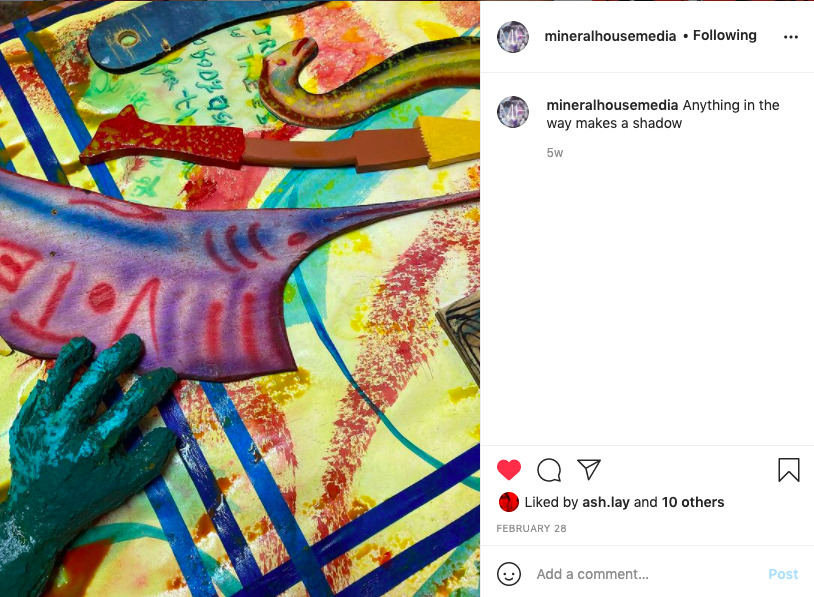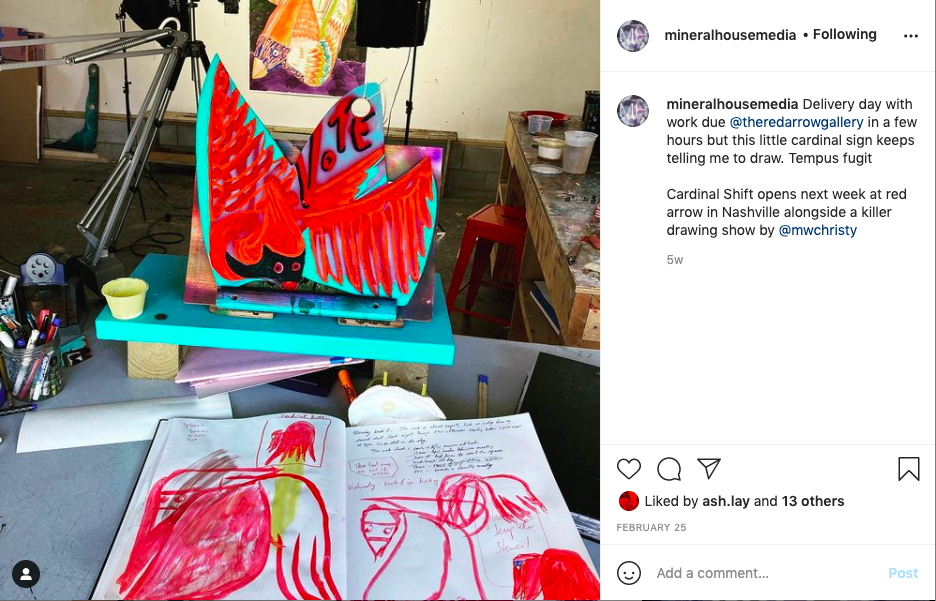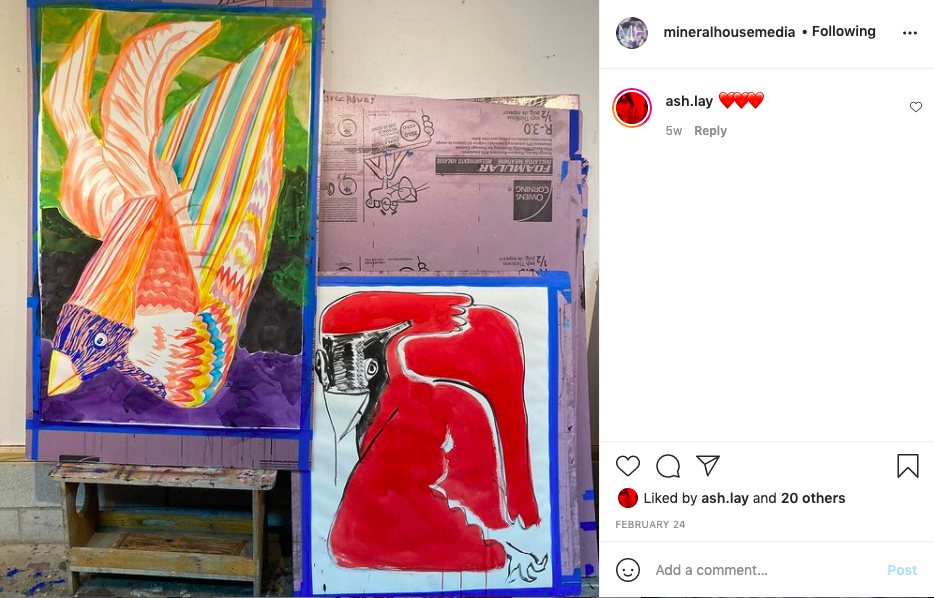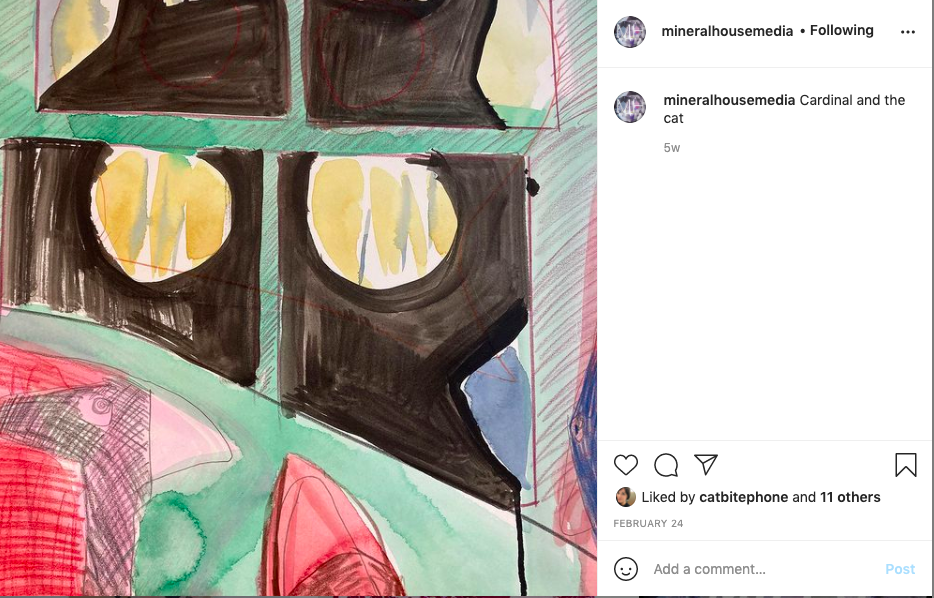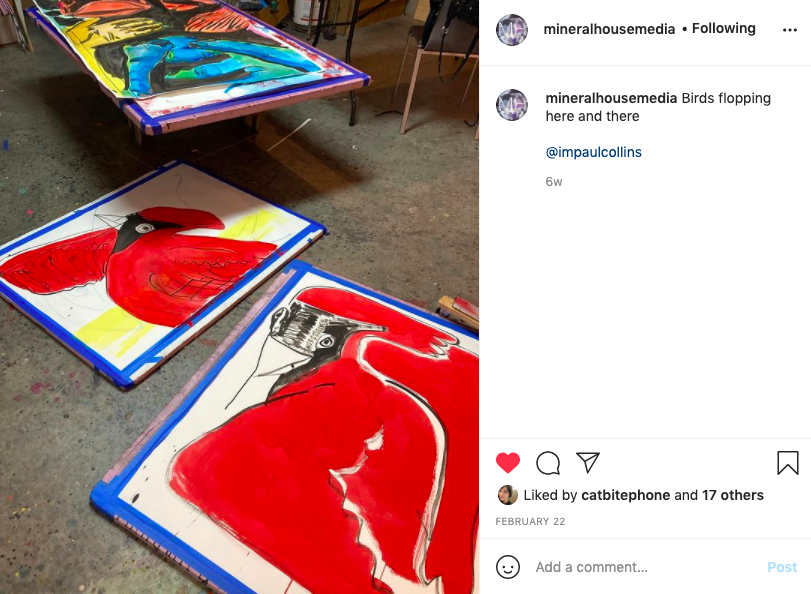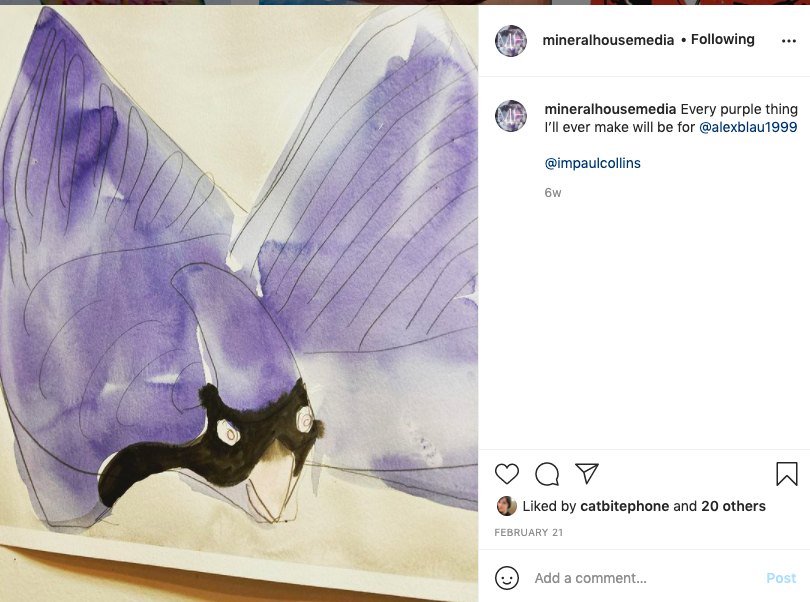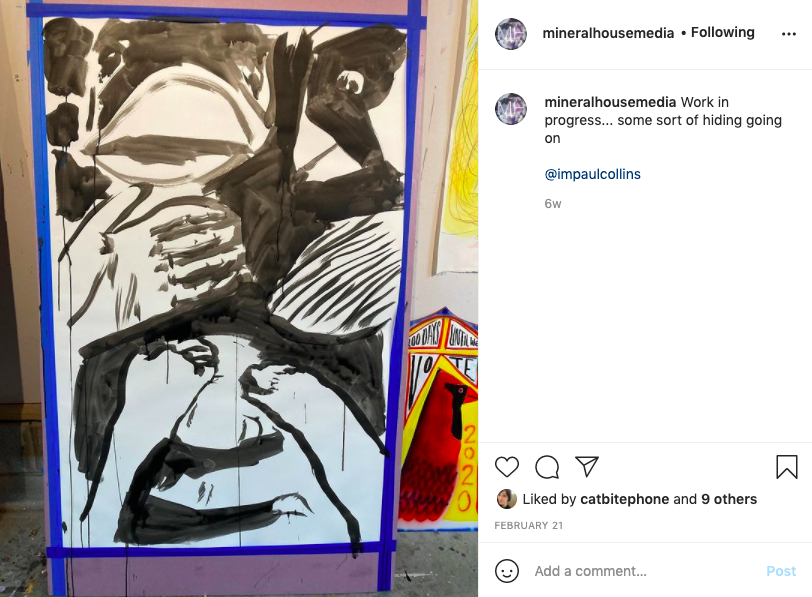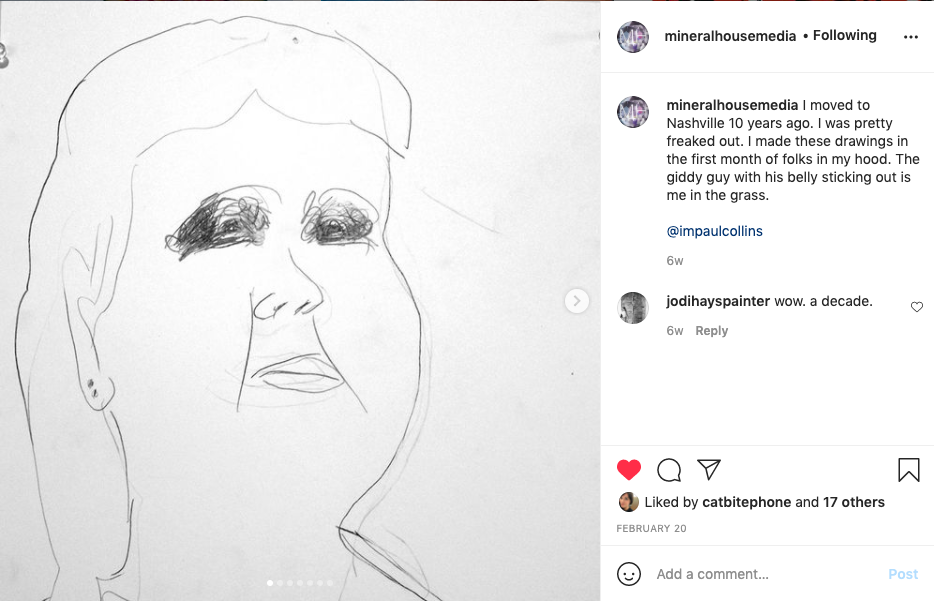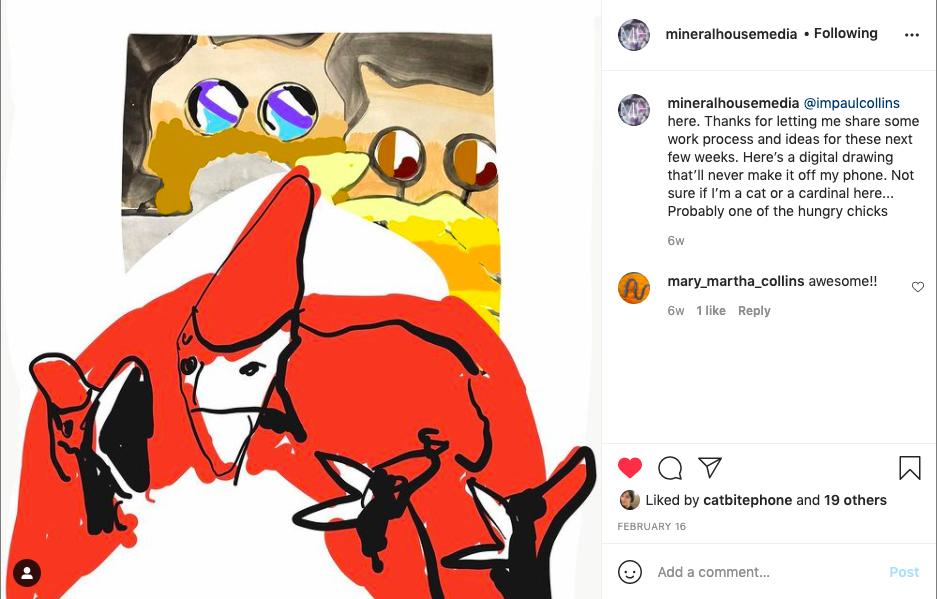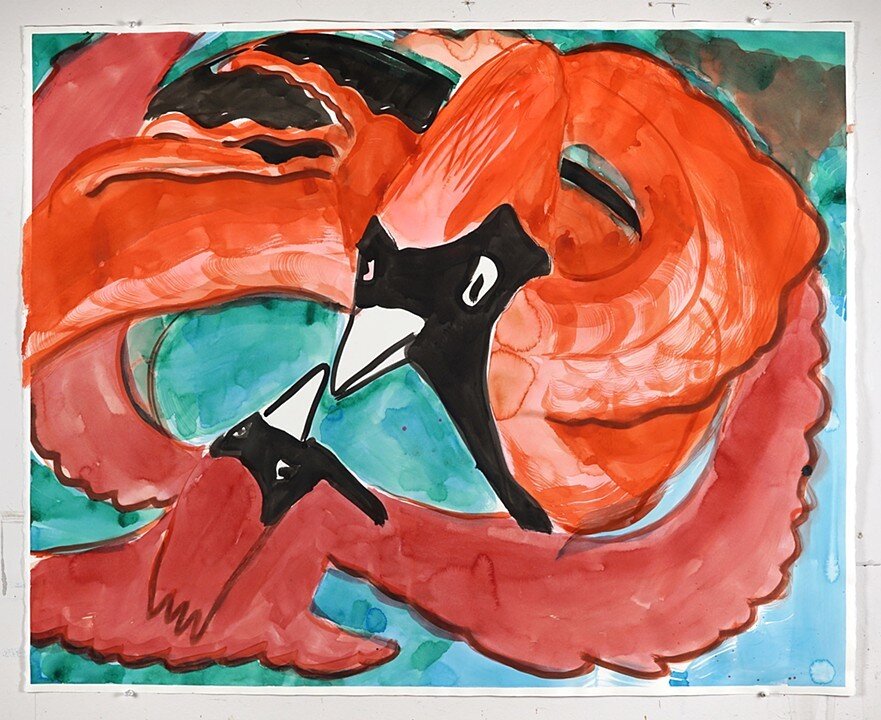Interview with Paul Collins
Interview with Paul Collins
February 2021 Digital Resident
I am a diarist artist, and for the past 30 years, I have used my daily personal, psychological, and familial experiences as a framework to speak most directly about meaning, vitality, mortality, love, and the texture of human interaction. Trouble at work?
Let’s start there and make a drawing and sketch the problem out in space... I find my best ideas for projects through a daily regimen of drawing, photography, and writing. As the ideas evolve I begin to invest in them materially through layered painted surfaces or even built environments in the hope of locating a nexus of meaning upon which to build a larger narrative. I work in a variety of media while developing any body of work. I find it helpful when ideas that exist as planar scribbles can also exist as three-dimensional constructions. I love it when a conversation between two forms of the same idea sheds new light on the evolving narrative. Against this backdrop of material possibility, I try to make a meaningful connection between a work’s image and its process of becoming.
-Paul Collins
“In my family, the appearance of a cardinal is a visit from a deceased loved one, and I’ve heard them described as a messenger between worlds.”
Mineral House Media: The cardinal seems to pop in and out of your works and is the star of your new exhibit at Red Arrow Gallery. Who is the cardinal, to you? Is it a character in your continual story? A physical placeholder for another idea?
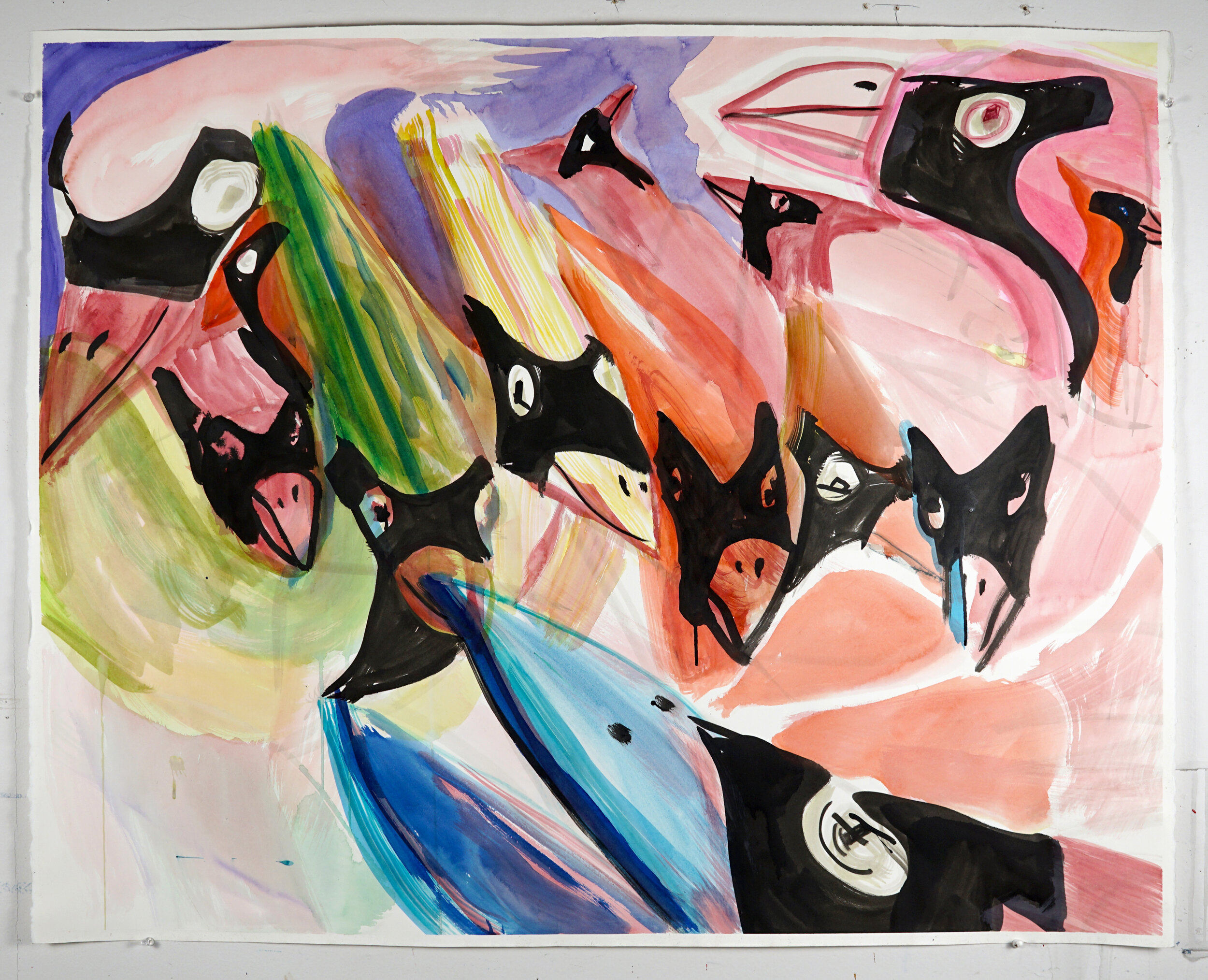
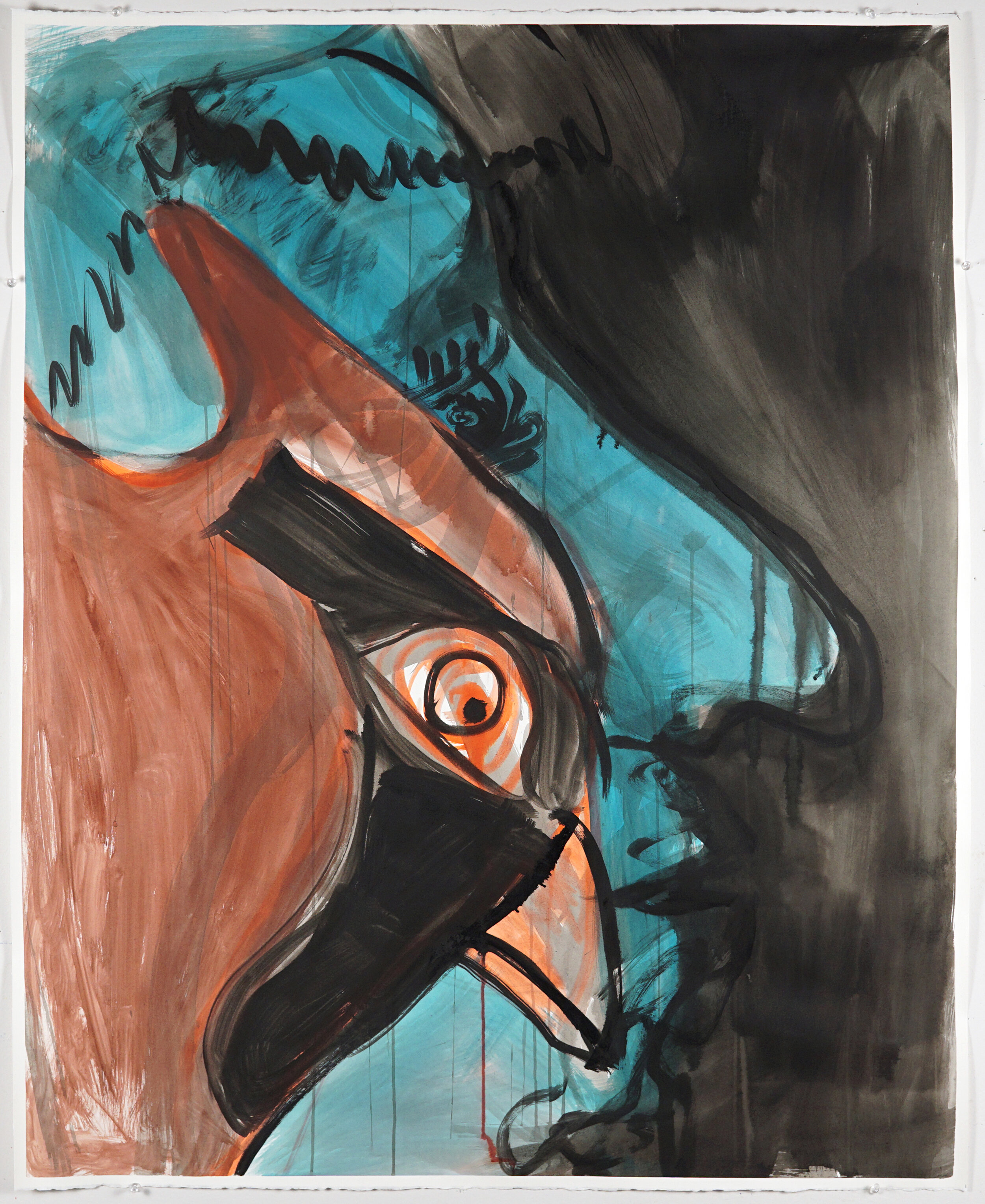
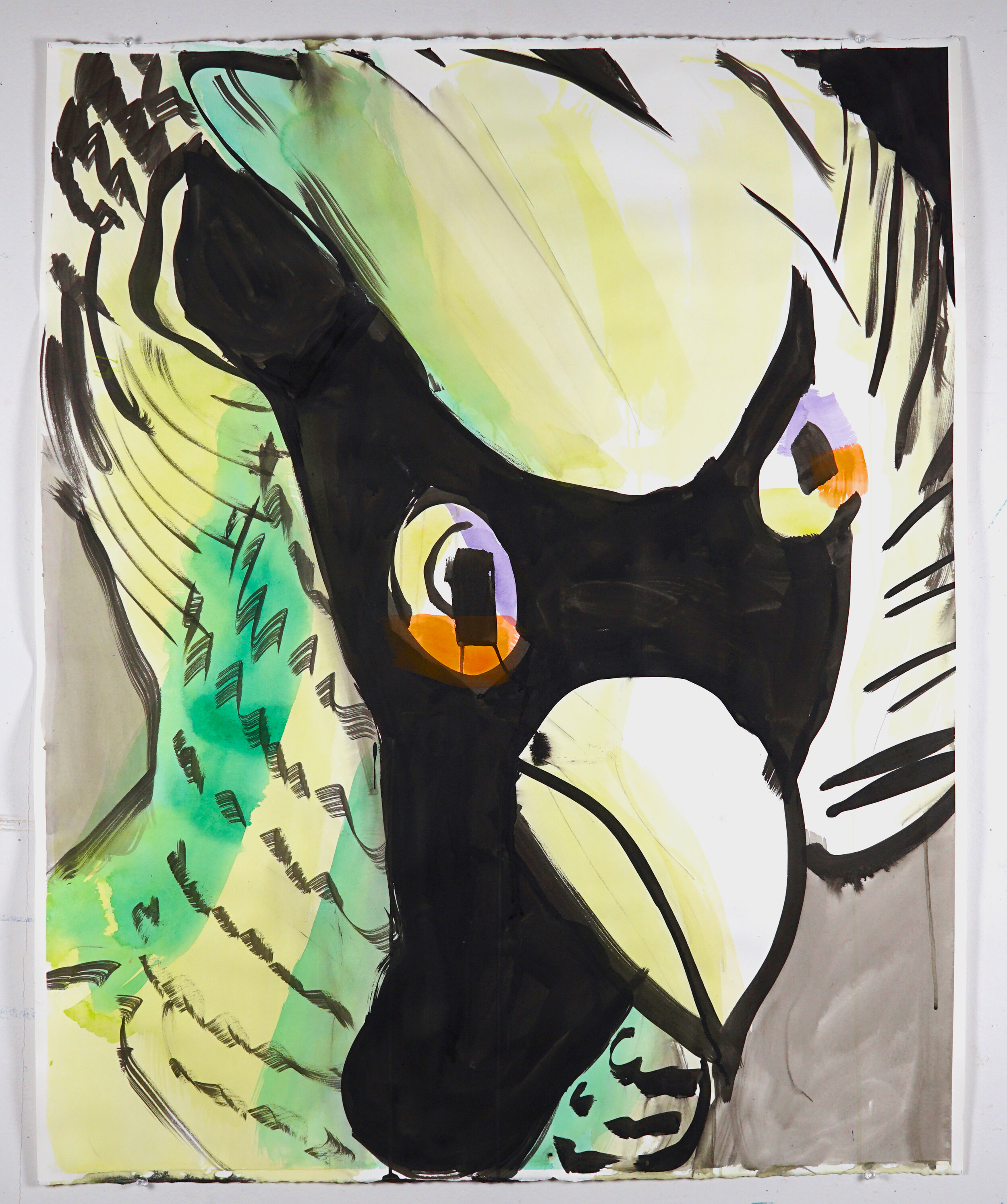
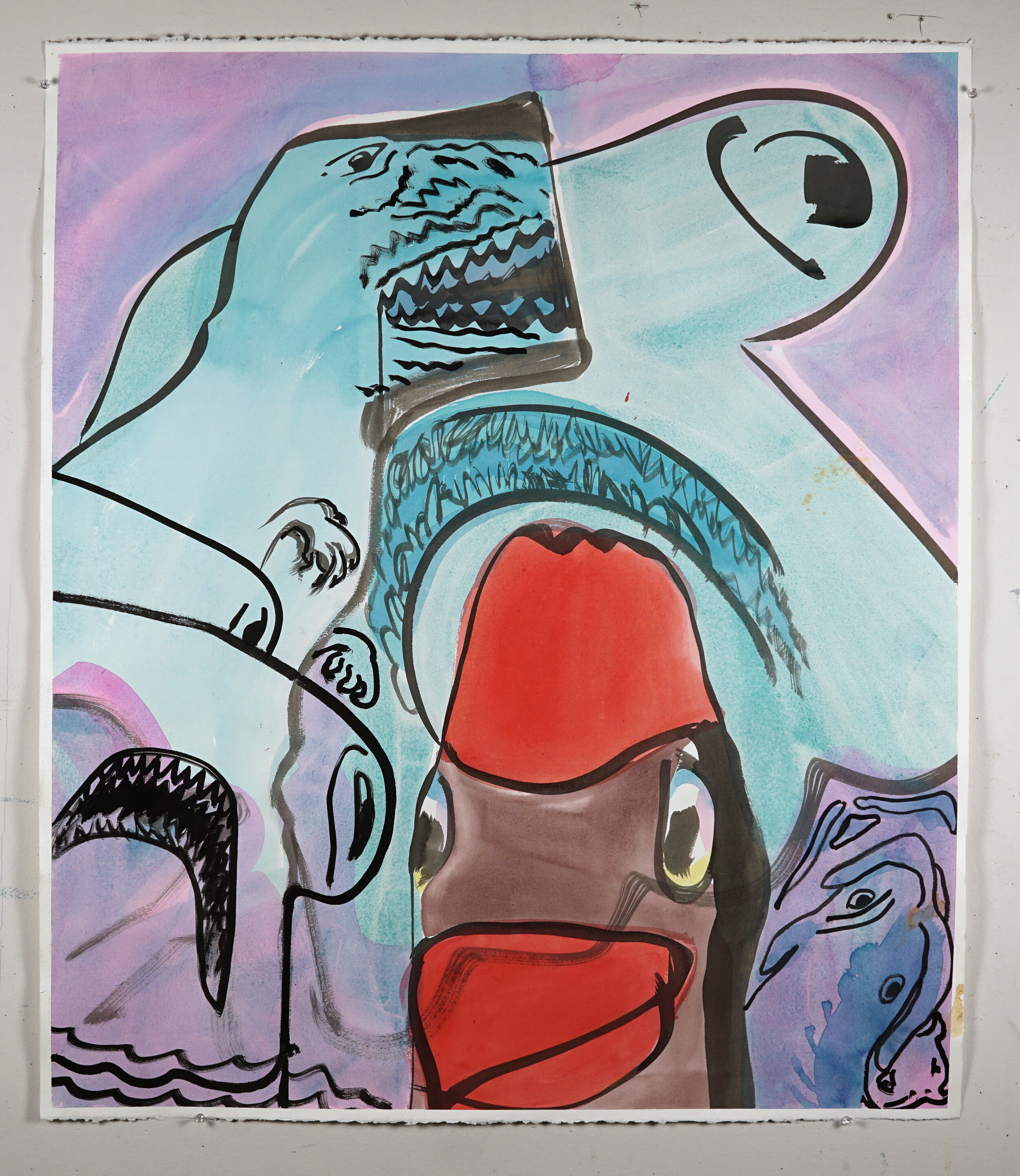
Paul Collins: After drawing hundreds of cardinals I should know, right? I don’t. In my family, the appearance of a cardinal is a visit from a deceased loved one, and I’ve heard them described as a messenger between worlds. They are a daily presence around my house. After being trapped at home for the last year they’ve become sort of visual sounding board. For all their mythic reputation they act like puffy chested bullies to the other birds around my bird feeders… as if to say “well look at me and make way!“. I love the way they look like comical masked crusaders: Very Buster Keaton. And they really careen when they fly, taking nervous sudden tight turns so they make wonderfully dynamic subjects to fill a space. I know when I paint them in flight there is a desire for an alternative to my own feeling of being trapped during this last long year, but I always feel strangely like we’re working together as therian twins. In painting hundreds this past year so I’ve let them become more the embodiment of desire and rhythmic impulse rather than any idea. I’m fine with saying I did my best to be a cardinal in 2020.
MHM: Can you tell us about any other forms or icons that continually appear in your paintings?
PC: I may have painted 12 birds over 30 years before 2020, but I’ve painted a thousand trees. We’re fucked as a species and the way we treat trees as disposable rubbish is proof in and of itself. Besides trees I strive to travel every creative season with my work and discover new images to work with, especially subjects ever-present but thinly considered(like birds).
MHM: What type of benefits do you reap from creating different versions of the same image? Can you describe what this approach brings to your practice?
PC: I make better work when I iterate. Period. I am a poor editor and I applaud early versions too easily. I used to think that rawness was precious and could be ruined(polished away) through further work. I see that now as a lack of seriousness. Things get more raw after the 20th or 30th go. Drummers know this.
MHM: Considering yourself a “diarist” artist, do you feel like memory plays a role in your work? Perhaps memorializing positively associated memories, or maybe revisiting and working through ones with a more negative weight to them?
PC: Hmmm. that’s a good question. I don’t think much of memory, but that does not mean it doesn’t play a strong operational role. Diarism to me means committing and elevating the mundane experience of what’s happening right now. What’s the opposite of memory? Maybe acute sensory presence … that seems like an accurate aim for me when I paint. Now AFTERWARDS everything is readable and I’ll find that, while I may have tried to in the spirit of some new perception, I was actually working within or against set patterns that have been with me in the studio for 30 years.
MHM: What differences in artistic gratification do you receive between sharing works that engage the public (like 100 Days of Vote signs) and more personal works (like Quarantine Drawings)? I understand both to be beneficial in their own ways.
“Diarism to me means committing and elevating the mundane experience of what’s happening right now. What’s the opposite of memory? Maybe acute sensory presence … that seems like an accurate aim for me when I paint. ”
PC: I’ve always made EXTRA STUFF to giveaway as gifts or trade with other artists. It’s a family tradition. Zines, carved thingamajigs, handmade coins with funny images and slogans like “quit your job and you’re a boss”, postcard art sent through the mail, portraits of people’s houses, pets or kids ... That’s always been a part of my practice and usually done when I wasn’t painting. Fast forward to 2017. After the last election I felt like my entire history of studio work was an indulgent investigation of the small world inside my head. I felt I needed to get out in the world and to forever bind my efforts to the unknown of the world outside my studio. When I started to work in public those giveaways became a really useful strategy to open doors and gain new ideas from the people I met. Working in public provided a better context for my giveaway works. My work has straddled that personal public fence since. I knew I wanted to do some sort of celebratory giveaway before the election because last year was one dark hole. Being able to make so many signs and give them away really sort of saved my sanity by offering connection to people when I felt most isolated. I am still trying to come to grips with how vital that felt to me. I am dreaming of a post gallery world where I can just make things and give them away like Santa Claus forever.
MHM: How do you find humor functions in your personal process, or in how the art object relates to the viewer?
PC: I think the world is pretty absurd. From every angle just impossible. Humor is a great way to bring people in close and to share hard truths without being preachy.
“After the last election, I felt like my entire history of studio work was an indulgent investigation of the small world inside my head. I felt I needed to get out in the world and to forever bind my efforts to the unknown of the world outside my studio.”
MHM: Out of all your mediums in such interdisciplinary work from drawing to installation to bookmaking, is there a favorite one you always find yourself going back to?
PC: Drawing!
MHM: What is your philosophy on navigating these many different materials and methods as you begin to catalyze new bodies of work?
PC: I just let myself gravitate toward things and I trust my hands. I’m a studio Darwinist and I believe that whatever medium I find myself working in now is the fittest.
MHM: Can you tell us about some of your ongoing projects, like Night Books (giant books based on your sketchbook pages)? Do any of your projects tend to be open-ended, or do some have a predetermined limit?
PC: Things have changed. I expect every year to cook up a new version of myself, but some things are always percolating in the background and warping that time frame. The Night books are a good example. I haven’t found their truest form, and they have been pushing into my plans every year for the last 3 years since they came into being. I backtracked into zines with the belief that those big books needed to be written and distributed as well as painted: text to inform the form and informed by the destination/location. I think they may end up being ephemeral outdoor public sculptures.
MHM: Have you found that teaching has shaped your values and process in the studio? Are there any films, readings, or other media that have informed your work or given you inspiration lately?
PC: Teaching is rad. It’s been tough as hell in the pandemic, but the strain has really boiled it down to an essentially empathetic act. It forces me to leave behind my expectations when talking to people because everyone’s experience is wildly divergent and challenging. I always learn when I teach but teaching without comfort is probably the most informing version of teaching I’ve experienced.
MHM: What would your perfect studio day be?
PC: Just working
MHM: Are there any other projects on the horizon?
PC: Yes, but I’ve got a breather in front of me this Spring and I’m excited to garden!
Paul Collins is an artist, curator, and educator in Nashville, TN. Paul has an MFA in Painting & Printmaking from Yale and has been a resident at the MacDowell Colony, Hambidge Center, Skowhegan, Anderson Ranch Arts Center, and the Vermont Studio Center. His work has been featured in New American Paintings, Number, and Native magazines. Paul teaches at Austin Peay State University and is represented by Red Arrow Gallery, Nashville, TN.

